Sponsors fall
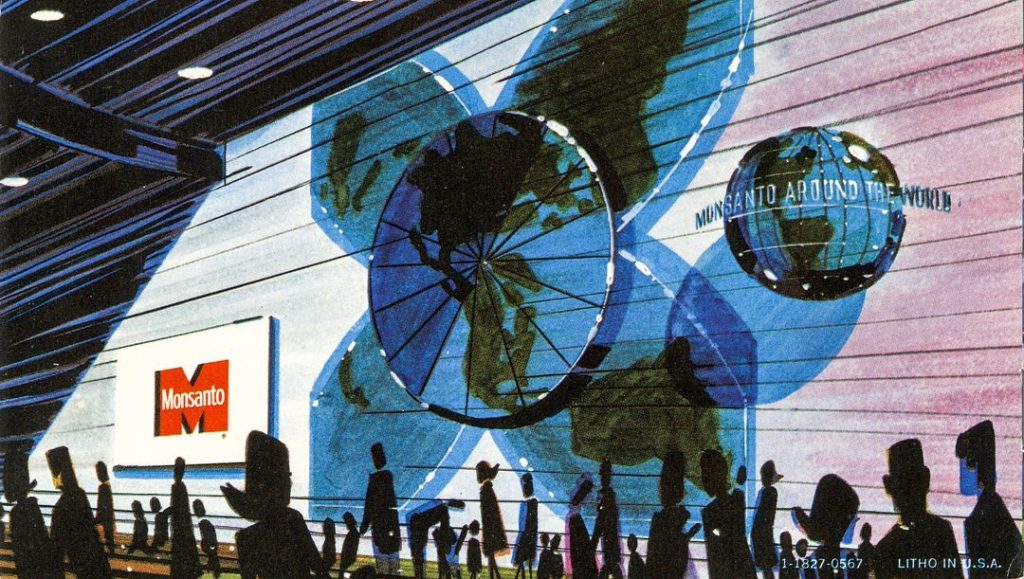
In 1977 – ten years after it opened – Monsanto suspended its sponsorship of Adventure Thru Inner Space.
It wasn’t the first time that a sponsor had opted not to renegotiate their contract with Disney, and it would be far from the last. Just a few years later, Disney would open a radical new kind of park in Florida called EPCOT Center that would rely almost entirely on sponsorship. A sort of “permanent World’s Fair,” Disney hoped that corporations would chomp at the bit to have their brands plastered across a Disney Park, and would in turn pay for upkeep on attractions and keep pre- and post-shows stocked with their newest technologies…
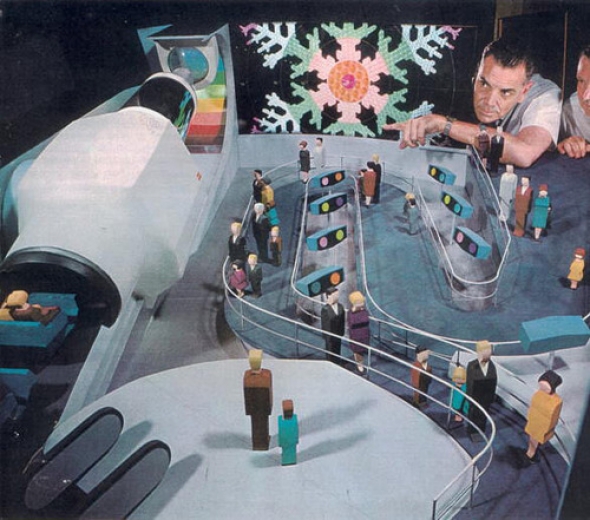
While it must’ve read a win-win on paper, if you ask many Disney Parks fans, the sponsor-based strategy crippled Epcot and lead to the degradation or closure of many fellow Lost Legends: Horizons, Journey into Imagination, BODY WARS, Kitchen Kabaret, and Maelstrom to name just a few. Each languished when its sponsor dropped out.
Even when Monsanto stopped footing the bill in 1977, Adventure Thru Inner Space continued on with a few simple edits to the attraction’s narration and signage.
Just two years later, the partial nuclear reactor meltdown of New York’s Three Mile Island facility was a turning point in the Atomic Age Walt had so adored. The 1979 accident didn’t just cool the growth of the atomic power industry; it shifted Americans’ relationship with the “wonders” of the atom – a relationship that would be shattered just seven years later by the Cherobyl Disaster in the Soviety Union.
However, Walt’s ode to the Atomic Age didn’t last quite that long…
New directions


Adventure Thru Inner Space might’ve been one of the last holdouts of Tomorrowland’s initial ideology: to sincerely educate and entertain by predicting how scientific advancement might create a better world. If its closure signaled the end of an era, then its replacement was equally important in pivoting Imagineering’s direction.
On September 2, 1985, Adventure Thru Inner Space closed forever.
In January 1987, Star Tours took over the south showbuilding along Tomorrowland’s entry. Under the guidance of then-new CEO Michael Eisner, Disney would radically transform. Eisner would use all that he’d learned as CEO of Paramount Pictures to oversee the rejuvenation of the company’s film studio, animation division, and theme parks.
It was Eisner’s assertion that Disneyland would be a place where guests could “ride the movies.” Trouble is, Disney wasn’t making many good movies at the time, so Eisner partnered with George Lucas to bring Star Wars into the parks. We told the full, behind-the-scenes story of the unprecedented collaboration in its own Lost Legends: Star Tours feature that’s a must read, but you know how the story ends…
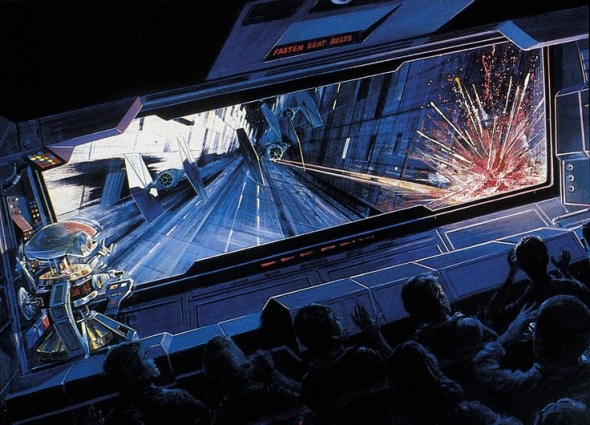
Obviously, Star Tours was a hit, though it’s an obvious pivot point. Before Star Tours, Disney had been in the ceaseless, endless race to keep Tomorrowland futuristic. Every few years, new exhibits, new stories, and new technologies had to be funded to keep “tomorrow” from becoming “today.” But with Star Tours, it became conceivable to Imagineers that Tomorrowland could be built in a way that would be timeless. Forget science; a science fiction land wouldn’t have to try to keep up with real emerging technologies! It wouldn’t even try to predict a real future, instead bringing to life fantastical ones.
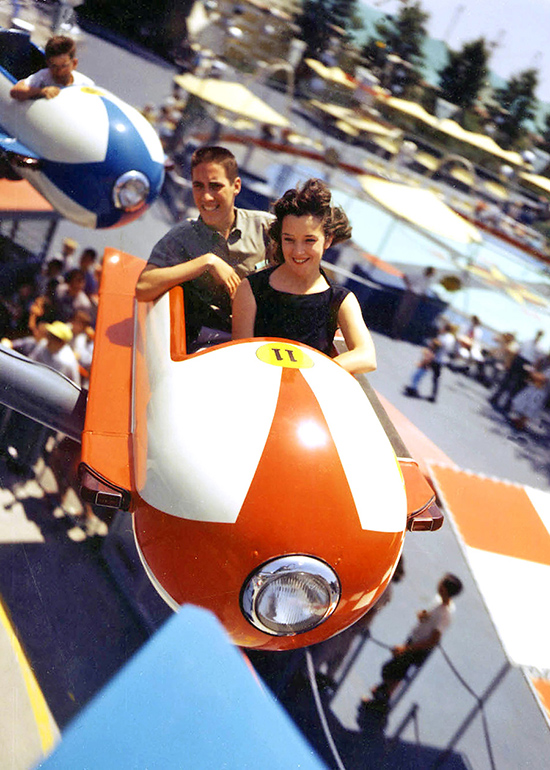
Compared to the Tomorrowlands of the ’50s, ’60s, and ’70s that had been intent on modeling themselves after real, current innovations and scientific styles, it’s easy to see that Disney’s relationship with the future has changed. Currently, Tomorrowlands across the globe largely avoid any predictions of what the real future might actually look like. Dressed in science fiction or science fantasy facades, most of those Tomorrowlands are nonetheless unfortunately and frustratingly populated by rides based on Monsters Inc., Finding Nemo, Lilo and Stitch, and Toy Story.
The takeaway? Tomorrowland’s very foundation shifted, and Adventure Thru Inner Space would be one of the last great sincere scientific attractions at a Disneyland-style park; a sort of precursor to the grand, revered dark rides and industrial concepts that would be shifted to EPCOT Center decades later. Inner Space would’ve felt right at home alongside World of Motion, Spaceship Earth, or Universe of Energy, and that is very high praise indeed.
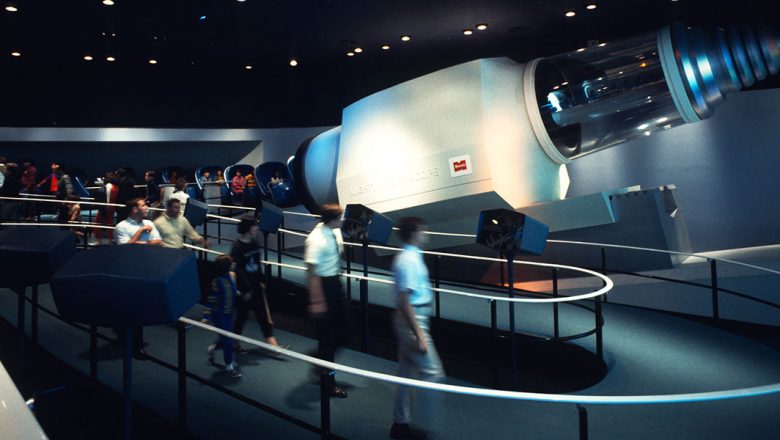
Of course, the world today is quite different from the world in 1967. Would today’s guests even bother to ride Adventure Thru Inner Space? Or would they overwhelmingly prefer Buzz Lightyear Astro Blasters given the choice? Speaking of which, Adventure Thru Inner Space survives even today in some very unique ways… Read on to find out where this classic Tomorrowland ride’s DNA ended up.



I really liked the conclusion to this story! It was very well written.